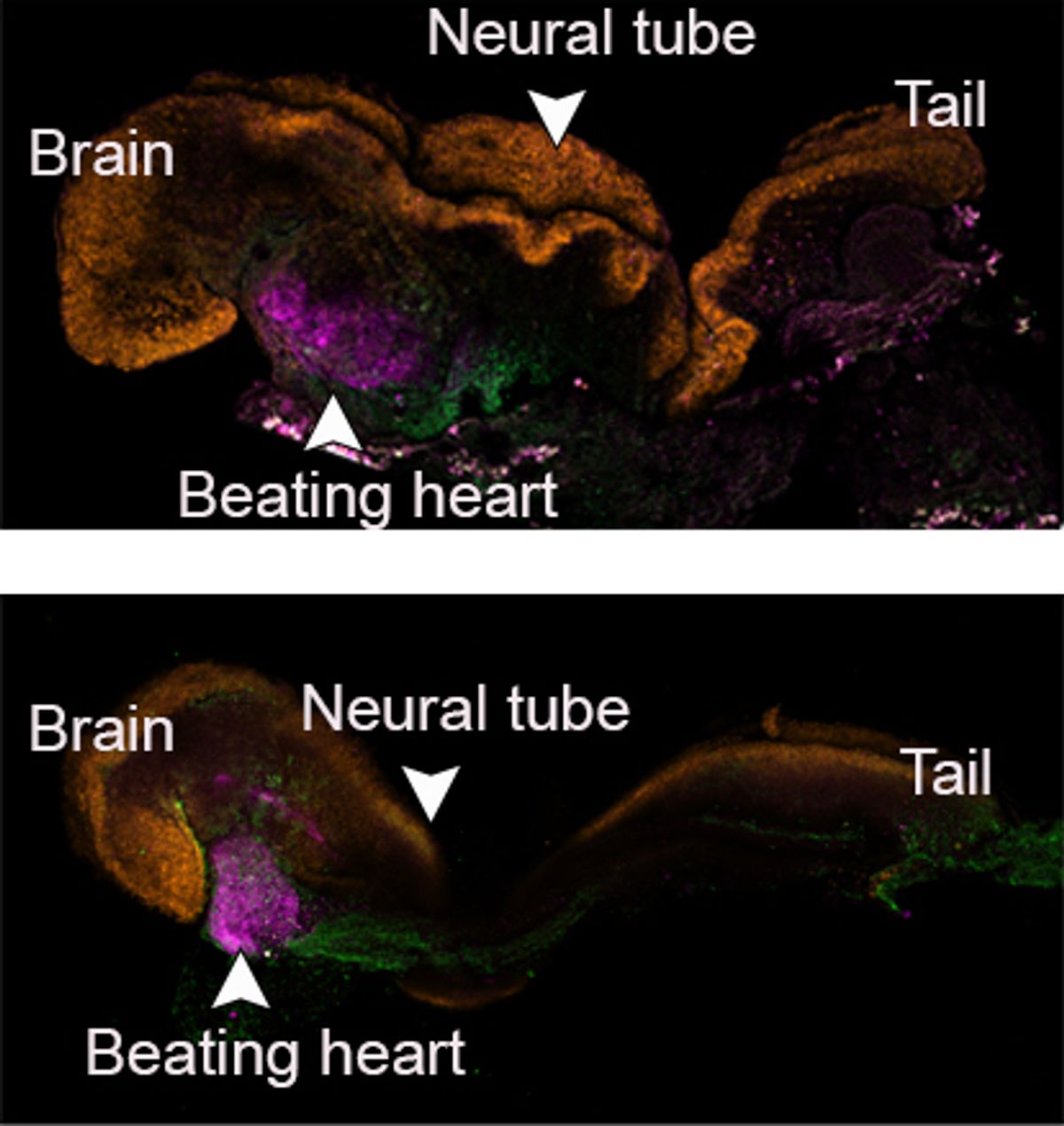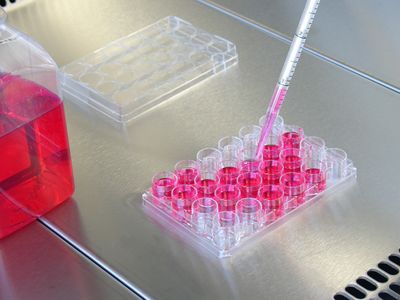ABOVE: Synthetic embryo development from day 1 (top left) to day 8 (bottom right) WEIZMANN INSTITUTE OF SCIENCE
Scientists from the Weizmann Institute of Science in Israel successfully generated living, growing, mouse embryos complete with organ progenitors from stem cells alone—and they did it entirely ex utero, keeping them alive for eight days with the aid of an artificial womb that previously maintained harvested embryos until they were 11 days old. The feat opens doors to new research on development and disease and raises questions about how far such research can—or should—go.
See “Lab-Grown Mouse Embryos Form Limbs and Organs”
“As soon as the science starts to move into a place where it’s feasible to go from a stem cell population in a Petri dish all the way through to organ development—which suggests one day it will be possible to go all the way to creating a living organism—it’s a pretty wild and remarkable time,” Paul Tesar, a developmental biologist at Case Western Reserve University School of Medicine who was not involved in the study, tells STAT.

The mouse embryos began as embryonic stem cells, according to the report published Monday (August 1) in Cell. Researchers then coaxed the stem cells to differentiate into embryonic lineages. When the cells were put together, they self-assembled into clumps.
After five days, the researchers transferred clumps that had developed enough to be considered synthetic embryos—only about 50 of the 10,000 generated in the experiments, according to STAT—into an electronic device designed to maintain the ideal conditions for embryonic development. In that artificial womb, they grew for three more days and reached developmental milestones consistent with mouse embryonic day 8.5, including developing the beginnings of a brain, a digestive system, and a beating heart. Indeed, gene expression analyses indicated the synthetic embryos were highly similar to natural ones and generally expressed canonical developmental markers as would be expected for their age. But after day 8, development stopped, and the embryos hearts became fatally enlarged.
See “Artificial Mouse Embryo Made in a Laboratory”
Alfonso Martinez Arias, a developmental biologist at Pompeu Fabra University in Barcelona who was not involved in the work, tells The Washington Post that the research is a “game changer,” adding: “This is an important landmark in our understanding of how embryos build themselves.”
Experts note that the research advances the possibility of someday generating whole animals from stem cells—including humans, down the line—though, the researchers were explicit in saying that isn’t their goal. Weizmann embryonic stem cell biologist Jacob Hanna, who led the team that developed the bioreactor used to grow the embryos past day 5, tells STAT he’s working to develop lab-grown tissues and organs for medical uses. He envisions the work leading to a world where doctors could take a skin biopsy from a patient and convert it into stem cells that could then grow into whatever they need—a perfectly matched kidney for transplant, perhaps, or healthy bone marrow cells to treat blood cancer. “It’s early days but we’re really opening up the field to explore these possibilities more seriously,” he says. “We’re moving from science fiction to science.”
Still, it would be imprudent to not anticipate the various ways such technology could be used in the future and develop ethical research guidelines, experts say. “The more and more we show the capacity for pushing stem cell-derived embryos further and further in development, the more synthetic embryos and natural embryos begin to merge,” Tesar tells STAT. “There will always be a gray area, but as scientists and as a society we need to come together to decide where the line is and define what is ethically acceptable.”





